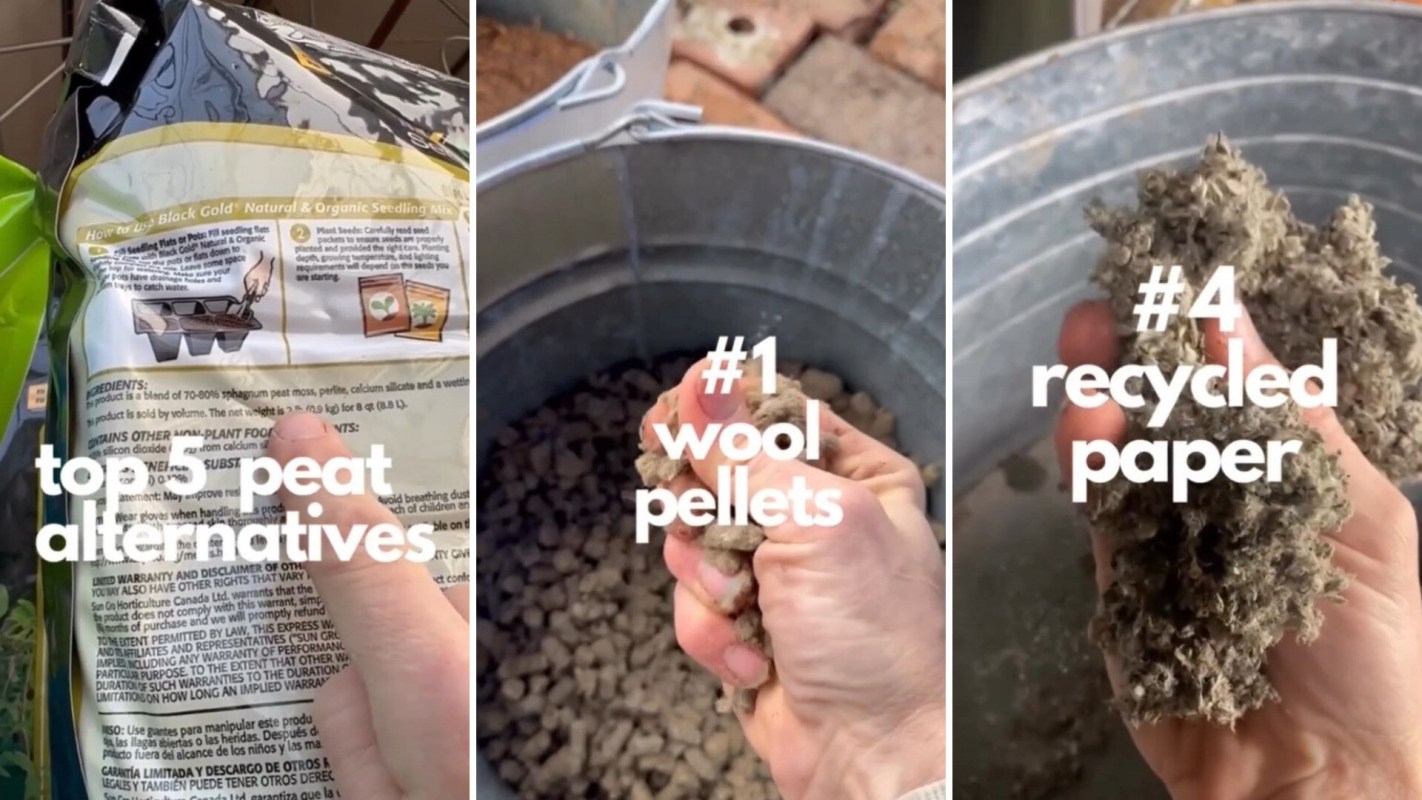An informative Instagram Reel draws attention to the unsustainable practice of peat harvesting and suggests accessible replacements that do the same job of enriching soil just as well (if not better).
The information and suggestions come from Instagrammer Growing with Nature (@blossomandranchfarm), a gardening influencer with a focus on pesticide-free growing.
If you've got planting plans this coming spring, start them off right with these peat-moss alternatives.
The scoop
In the video, Growing with Nature presents five alternatives to peat. The first option is coconut coir. This organic material holds lots of water and can be used repeatedly. And while it certainly looks like it might be teeming with healthy nutrients for seedlings, it's actually rather inert and will need to be supplemented.
The second is recycled paper, such as PittMoss. This medium is created from the by-products of paper production. Tree fibers and papers are then processed into organic fibers, which then can be used in soils for gardening.
Third? Sifted, homemade compost. With this option, you'll have complete control over the nutrient content. Just make sure your compost doesn't get too hot, or you can accidentally purge helpful microorganisms that will help your plants and seedlings thrive.
Fourth on the list is leaf mold. For anyone with a leafy tree in their yard (or even in their neighborhood), this is by far the best choice for the budget-minded gardener — because it's absolutely free! Instead of bagging and tossing leaves during the fall, they can be collected and transformed into compost instead.
Lastly, the Instagrammer suggests wool pellets. They're not harmful to the environment, and they serve as a great substitute for peat moss as their breakdown process is slow, ensuring a steady release of nitrogen to the soil as they decompose, which helps plants grow.
If wool pellets caught your eye as an option, blossomandranchfarm recommends researching whatever brand you're considering to ensure they're cruelty-free.
How's it helping
Peat moss harvesting has been a growing problem for years. While not generally regarded as glamorous as forests or oceans, the bogs where pet moss grows are just as vitally important as any other biome, and they're home to millions of birds, mammals, and insects.
They also store an entire third of the planet's soil carbon, which means the destruction of these bogs in the pursuit of peat moss harvesting could mean tons of polluting gases being released into the atmosphere.
What's everyone saying?
One commenter echoes concerns about peat moss harvesting in a comment under the reel.
"I want to make the switch this year, I recently did a deep dive into the devastation of peat bogs. I have market nursery, we're small but we want to be as responsible as possible," they write. "I'm going to be searching for a bulk source of the wood wool pellets, sounds like a good alternative."
Among the options, wood pellets seemed to be gathering most of the attention.
One user adds, "I need to get my hands on some wool pellets!! Being in Canada, the source of most sphagnum peat used in the industry, it's so challenging to get away from it… love these recommendations."
Join our free newsletter for easy tips to save more, waste less, and help yourself while helping the planet.









